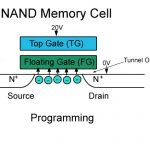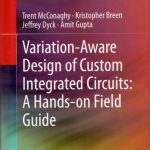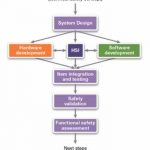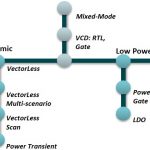You are currently viewing SemiWiki as a guest which gives you limited access to the site. To view blog comments and experience other SemiWiki features you must be a registered member. Registration is fast, simple, and absolutely free so please,
join our community today!
WP_Term Object
(
[term_id] => 157
[name] => EDA
[slug] => eda
[term_group] => 0
[term_taxonomy_id] => 157
[taxonomy] => category
[description] => Electronic Design Automation
[parent] => 0
[count] => 4305
[filter] => raw
[cat_ID] => 157
[category_count] => 4305
[category_description] => Electronic Design Automation
[cat_name] => EDA
[category_nicename] => eda
[category_parent] => 0
[is_post] =>
)
Let’s just take it as a given that securing IP design data is critical. It’s rather like saying that it’s a good idea to have security in the Tower of London to stop the crown jewels being stolen. IP blocks are the crown jewels of an SoC company.
Data now must be secured within the collaborative teams that share that… Read More
Rarely do I fly first class but I did on my recent trip to Asia. It was one of the new planes with pod-like seats that transforms into a bed. The flight left SFO at 1 A.M. so I fell asleep almost immediately missing the first gourmet meal. About half way through the flight I found myself barely awake staring straight up and what do I see? STARS!… Read More
As consumers, we take NAND flash memory for granted. It has worked its way into a vast array of products. These include USB drives, SD cards, wearables, IoT devices, tablets, phones and increasingly SSD’s for computer systems. From the outside the magic of flash memory seems quite simple, but we have to remember that this is a technology… Read More
When I studied mathematical analysis, one of the things that we had to prove turns out to be surprisingly difficult. If you have a continuous function and at one point it is below a line (say zero) and at another point it is above zero, then there must be a point at which the value is exactly zero. In effect, a continuous function can’t… Read More
Wi-Fi has this reputation as being a power hog. It takes a relatively big processor to run at full throughput. It is always transmitting all over the place, and it isn’t very efficient at doing it. Most of those preconceived notions arose from older chips targeting the primary use case for Wi-Fi in enterprise and residential environments.… Read More
My IC design career started out with DRAM at Intel, and included SRAM embedded in GPUs, so I recall some common questions that face memory IP designers even today, like:
- Does reading a bit flip the stored data?
- Can I write both 0 and 1 into every cell?
- Will read access times be met?
- While lowering the supply voltage does the cell data retain?
…
Read More
I met Michael Sanie last week. He is in charge of verification marketing at Synopsys. I know him well since he worked for me at both VLSI Technology and Cadence. In fact his first job out of college was to take over support of VLSIextract (our circuit extractor), which I had written. But we are getting ahead.
Michael was born in Iran and… Read More
We’re putting the finishing touches on Chapter 9 of our upcoming book on ARM processors in mobile, this chapter looking at the evolution of Qualcomm. One of the things that made Qualcomm go was their innovative use of digital simulation. First, simulation proved out the Viterbi decoder (which Viterbi wasn’t convinced had a lot … Read More
Audio Video Bridging (AVB) is a well-established standard for in-car infotainment, and there is a significant amount of activity for specifying and developing AVB solutions in vehicles. The primary use case for AVB is interconnecting all devices in a vehicle’s infotainment system. That includes the head unit, rear-seat entertainment… Read More
There’s only one software company that I know of that covers four major disciplines: Fluids, Structures, Electronics and Systems. That company is ANSYS and when they acquired Apache Design Automation back in 2011 they filled out their products for electronics design, and more specifically in the area of integrated chip-package… Read More










Quantum Computing Technologies and Challenges